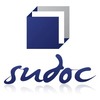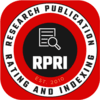Literature and Hindi Cinema
Keywords:
Cinema, Society, Entertainment, Commercialism, Social changeAbstract
Hindi cinema has a history of more than 100 years old. Dadasaheb Phalke after understanding the audience’s interest, screened a speechless film named “Raja Harishchandra” on 3 May 1913 at the Coronation Cinema House in Bombay. This is how the foundation of Indian cinema was laid. This was the first film to be fully recognized as the first Indian feature film. On March 14, 1931, Ardeshar Irani made the first spoken film in Hindi titled ‘Alam Ara’ through engineering cinema. The first talkie film presented by Prabhat Film was ‘Ayodhya Ka Raja’ which was released simultaneously in Hindi and Marathi. In 1937, Irani made the first colour cinema in India called ‘Kisan Kanya’. ‘Sant Tukaram’ produced by V Shantaram, was the first Indian film in Marathi to be honored at the Venice International Film Festival.
After the Second World War and independence, many films were made on nationalism and national sentiments. Besides, Hindi cinema played an important role in maintaining national unity and communal harmony. The 1960s are called the golden period of Hindi cinema. In this decade, Hindi cinema took a mature and huge form. Social and family cinema was made in the seventies. This decade is considered the star era. Hindi cinema of the eighties turned towards nudism due to Western influence. Action, masala, violence etc. dominated the films of the nineties. The Awakening in the twenty-first century brought about a complete change in Hindi cinema. Now Hindi cinema has taken a completely commercial form. The more knowledge science develops, the more the form of Hindi cinema will change, but Hindi cinema will continue to move forward keeping in mind Indian literature, society and culture.
Literature and cinema have an unbreakable relationship. Literature presents an ideal of cinema. While making cinema based on literary genres along with the content of novels, stories, drama, essays and poetry, art forms like language, figures of speech, images symbols etc. are also presented very effectively.
References
Laurence D. Lerner, (1954), English Literature, Oxford University press, London.
Ramsharan Josh, (2003), Media and Marketing, Shanthi Prakashana, Bengaluru.
Krishnakumar Rattu, (1994), Audio-visual and mass media, Everest publishers, Delhi.
Jogendra Singh Bisen, (2002), Media and Society, Everest publishers, Delhi.
Pandit Bane, (2016), Media and Hindi, Everest publishers, Delhi.
Downloads
Published
How to Cite
Issue
Section
License
Copyright (c) 2025 AKSHARASURYA

This work is licensed under a Creative Commons Attribution 4.0 International License.








